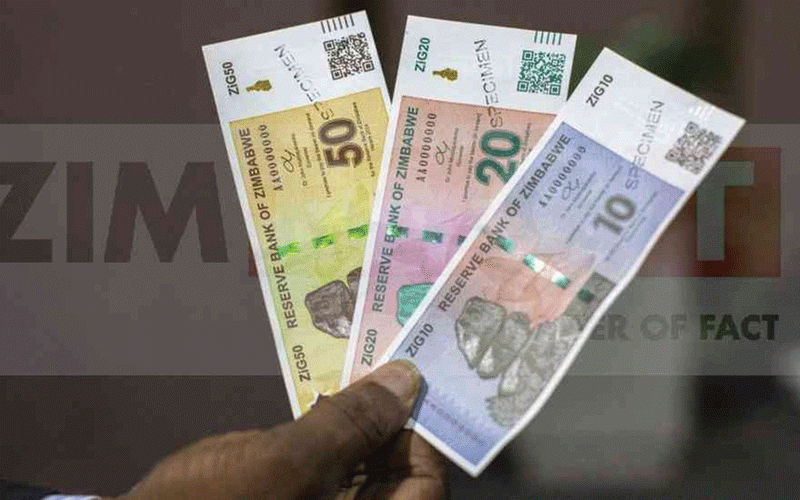
With the economy all but dollarised, traders are now rejecting the local currency with all the notes and coins below ZW$50 dying a natural death.
It is only a matter of time before informal players start to reject outright all the local notes circulating in the market in favour of the US dollar or the Rand which is preferred for the southern parts of the country. The events mark the beginning of an end to the local currency which will only maintain a virtual presence going forward.
Officially, over 77% of transactions performed in the economy are in foreign currency while close to 70% of local loans are now in US Dollar. The banking sector Foreign Currency Accounts (FCA) deposits have maintained at approximately US$1.6 billion (65% of local deposits). However, it is estimated that over US$2.5 billion is circulating on the informal market, largely fed by the over US$1.66 billion that Zimbabweans in Diaspora send home every year.
Regulated statistics
Through the promulgation of Statutory Instrument (SI) 27 of 2023, Zimbabwe abandoned publication of month on month and annual inflation figures in local currency in favour of a blended inflation (weighted average of local currency and US Dollar prices).
The last published annual inflation figure in January 2023 was 229.8%. The adoption of blended inflation largely serves as a political narrative that inflation is declining especially in an election year despite the fact that prices are skyrocketing daily on the market and the local currency is tumbling in value.
The adoption of a blended rate paints a sad picture of how the central bank has surrendered on its core mandate of sustaining stable and low inflation and maintaining price stability in the economy.
Ideally, the Zimbabwe National Statistics Agency (Zimstat) should publish consumer price indices in the local currency, in US Dollar and in their preferred blended form so that businesses and various stakeholders pick what is relevant to them. The blended inflation figure serves no purpose for referencing or accounting purposes as goods and services are purchased in one currency, (either local or foreign currency) not a cocktail of currencies in one transaction.
- ‘Inflation could shoot to 700% by April next year’
- New perspectives: Inflation control critical for economic growth
- Inflation spike: Why interest rates aren’t the answer
- Village Rhapsody: Govt must ensure that devolution works
Keep Reading
It is key to point that the central bank does not issue foreign currency and has no control on its circulation or inflation rate hence any claim of stabilising inflation through adoption of a blended rate is misleading.
Election year and confidence
Zimbabwe is set to hold its harmonised elections before the 31 st of August as mandated by the supreme law of the land. Traditionally, the campaign period is characterised by politically motivated violence, rampant money printing to finance agricultural subsidies to appease the electorate, a freeze on critical economic reforms and knee jack social policies or political pronouncements aimed at courting the electorate.
These events have a negative impact to market sentiment and business confidence. As such, artificial demand for US Dollar has spiked as traders take positions to avoid inflation induced losses. This means that prices are on an upward trajectory in line with the growth in money supply which has eclipsed ZWL$3 trillion. It is fair to say the dedollarisation plan has flopped.
Flopped de-dollarisation attempt
In February 2019, the government relaunched the Zimbabwean dollar (as a mono-currency) and banned the use of multiple currencies through Statutory Instrument (SI) 142 of 2019.
It only took 1 year for the government to reverse the ban with the promulgation of SI 85 of 2020 which allowed consumers to legally pay for goods and services using foreign currency.
Other regulations (SI 185 of 2020) later followed to compel local businesses and persons to price their goods and services using the central bank determined foreign exchange rates.
What followed afterwards was a rapid decline of the productivity because of a combination of factors coalesced around high inflation, exchange rate volatility and foreign currency shortages.
Economic output declined from 4% growth realized in 2018 to -6.5% recorded in 2019 and -6.2% in 2020 according to official figures from treasury.
Annual inflation raced from 57% in January 2019 to 521% recorded in December of the same year.
Tax revenues plummeted from US$5,237 billion collected in 2018 to US$2,691 billion collected in 2019.
With skyrocketing inflation and devaluation of the domestic currency, the writing was always on the wall. The de-dollarisation path went off rails soon after its launch due to absence of various economic fundamentals that support the stability of a fiat currency such as foreign currency or gold reserves, low levels of inflation, market confidence in the central bank or economic policy, sustained fiscal balance, central bank monetary policy independence from political interference and good governance.
Experiences from other countries
Globally, forced de-dollarisation has had limited success. Countries that tried to force de-dollarisation experienced financial disintermediation and capital flight.
Some chose to reverse their policies a few years later to counter the adverse economic consequences.
Zimbabwe was neither the first country to fully dollarise, nor was it the first to attempt to de-dollarise.
Countries such as Cambodia, Bolivia, Vietnam, Peru, El Salvador, and Chile (among several others) have dollarised and tried to de-dollarise before. De-dollarisation has never been successful as a policy but as a benefit to pragmatic economic reforms.
Only a handful (Notably Israel, Poland, Vietnam, and Georgia) have managed to fully de-dollarise due to a combination of factors such as the adoption of free market policies especially on foreign exchange, low domestic money supply growth, macroeconomic stability, and strong institutions.
Critically, success was underwritten by political will to reform the governance system and grant the central bank monetary policy independence.
In Chile, Israel, Georgia and Poland, the process began with a successful disinflation program, leading to a more flexible market driven exchange system and a monetary policy aimed at lower inflation. The success stories in the four countries show that the first step toward de-dollarisation is macroeconomic stabilisation.
Fiscal consolidation then lessens the need for government borrowing from the central bank and a tighter monetary policy reduces credit growth. Both fiscal and monetary policies restrain aggregate demand and lead to the appreciation of the real exchange rates. It can also be observed that de-dollarisation success stories followed a change in governance or policy shift to more pragmatic or market driven approaches that encompassed deregulation and privatisation of state entities.
Zimbabwean dollar fate
The Zimbabwean dollar was prematurely introduced without a clear de-dollarisation plan and the mentioned fundamentals that can still affect the US Dollar value in the local economy.
The government then tried to use excessive regulations (SIs) to force de-dollarisation with limited political will to addressing key factors that led to economic instability.
These factors include low agricultural and industrial productivity which entail huge import bill, sustained budget deficits (profligate spending), high levels of money printing by the central bank to fund subsidies and quasi fiscal activities (deficit financing through printing), low levels of public trust, rampant corruption that feeds off public funds, foreign debt and institutional flaws on property rights and rule of law.
Without pragmatic efforts to address these economic fundamentals above, de-dollarisation remains a tall order.
The prospects for the local unit remain bleak as the government will not initiate any notable economic reforms in the run up to the elections.
All the attention and funding has been turned to the political campaign. Local currency inflation will remain elevated in triple digit figures for the rest of 2023.
The central bank will fight hard to maintain the local currency to justify its existence, while the government would also want the ability to print and finance various programs which cannot be accommodated under collectable tax revenues.
For the formal business sector, a stable local currency is ideal. This means that in the short term, the status quo will remain with the local currency operating as an electronic currency in the formal market only while the US Dollar and the Rand operate as hard currencies used for trade and savings.
It will be a political loss to the government to officially dollarise again, thus the best strategy may be to let the status quo remain with the Zimbabwean Dollar dying behind the scenes. Above all, there may never be a demonetisation plan for the local currency to talk about.
- Bhoroma is an economic analyst. He holds an MBA from the University of Zimbabwe. — Email [email protected] or Twitter @VictorBhoroma1.











